19th century explorer Daniel Bunce was the first curator of Geelong Botanic Gardens; a life-size model of him and a Victorian lady visitor to the gardens stands just by the entrance today.
My experience at the gardens
I really liked Geelong Botanic Gardens for their mix of the modern and the vintage, with lots of information boards telling us how different heritage objects ended up in the gardens. There was less focus on big trees than in some of Victoria’s botanic gardens, but I had a feeling that some of the biggest, most ancient trees in this part of Geelong were actually in what is now called Eastern Park, even if that was once part of the enormous 200 acre site the original botanic gardens filled.
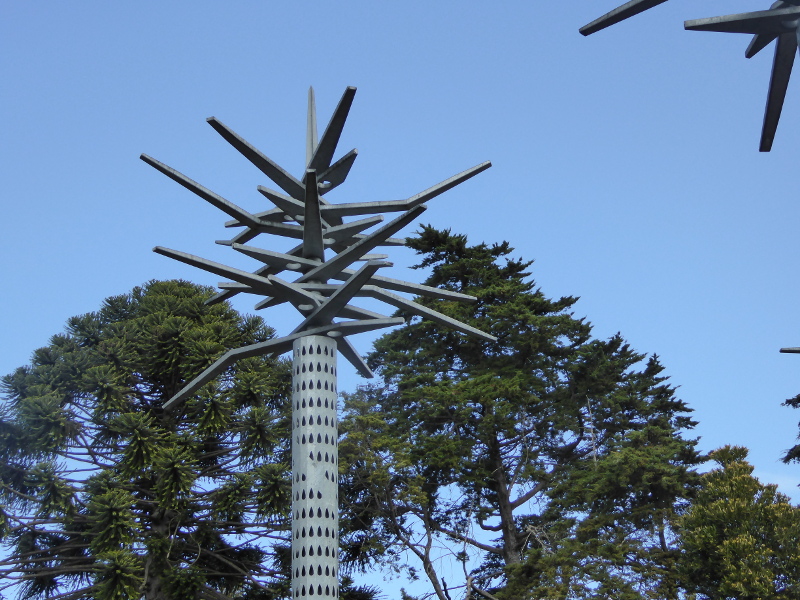
The entrance these days is via the modern “21st century” garden, with its spectacular, tree-like sculptures towering over the gateway. I got the impression, as I did my tour round the whole of the gardens, that this is these days the only way in to the place, any former entrance gates, especially along the far end of the Gardens, now closed off or fenced in.

Paths circle round two sides of the 21st century section until you reach the 1964 Geelong Botanic Gardens entrance gate. This is much more in the vintage mould I’d come to expect from this tour of gardens round Victoria.

Just inside this gateway are two life-sized figures in the same vein as similar sculptures near the Eastern Beach Baths and the Cunningham Pier. These are so-well made, and cleverly-thought through in their design.
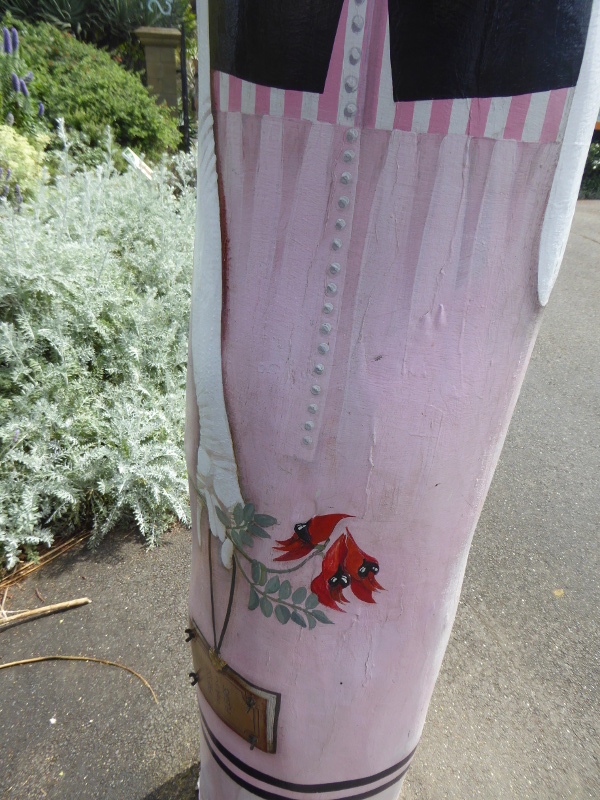
The male is Geelong Botanic Gardens’ first curator, the former explorer Daniel Bunce (see history below). The woman next to him, I learnt from the information board nearby, has a guilty look on her face and a hand hidden behind her back, as she has been picking flowers illicitly, which was an ongoing problem for the curator in the early days.
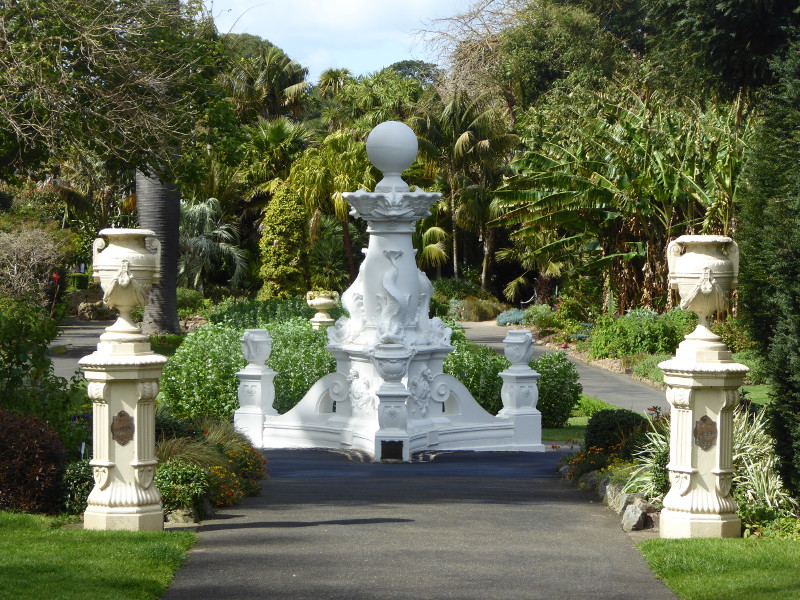
Then comes the first of two vintage fountains in these gardens, though neither of them began their life here.
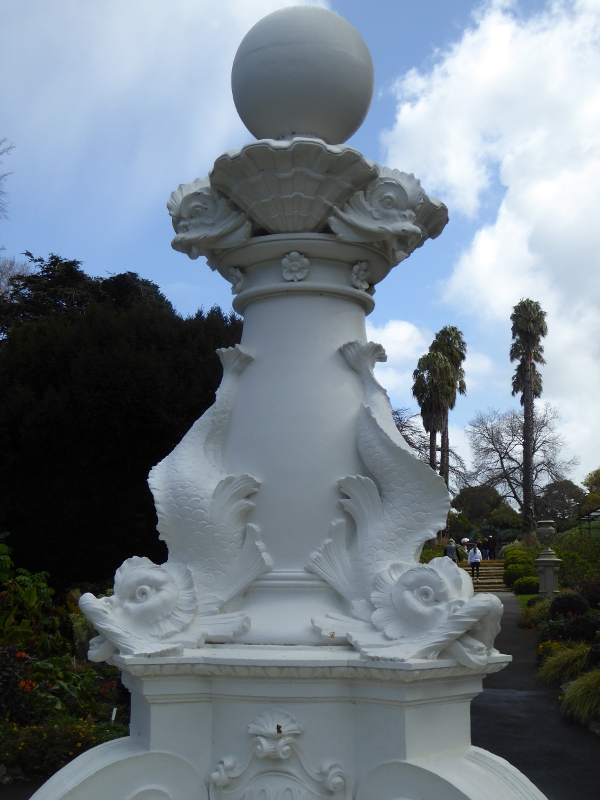
The first was a gift of a General Hitchcock in 1904, which used to be in the city centre, but was brought to the gardens in 1912, along with several other of the vintage structures here.
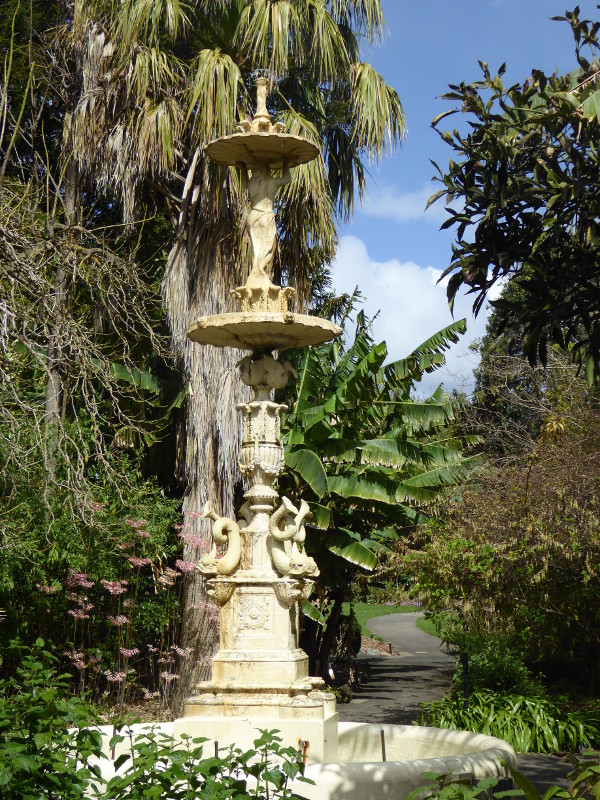
The second fountain had a similar trajectory, also standing in the city centre until it too was moved to the botanic gardens in 1912.
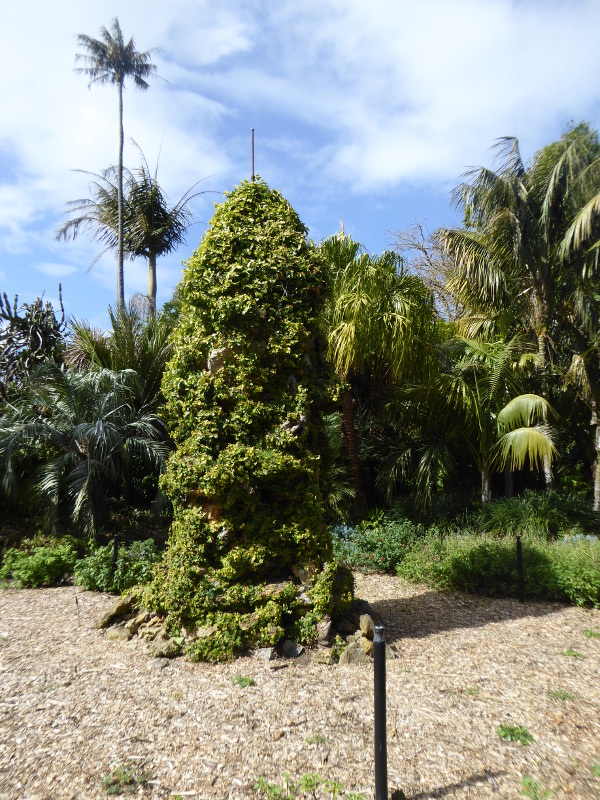
And this rock pillar used to be the base for an even bigger fountain in the middle of what was then the 2nd curator’s masterpiece, the fernery.

There isn’t much left of the old fernery these days, ferns having rather gone out of fashion since Victorian times, though there was a collection of them near the pond in one section of the gardens.

I looked for goldfish in the pond but, apart from what looked like a good bunch of water lillies floating on top, there didn’t look as if there’d be much space – or oxygen – left for any fish in this pond in 2021.
Three more vintage structures made for attractive additions to the gardens, but none of them had been built for the gardens originally.
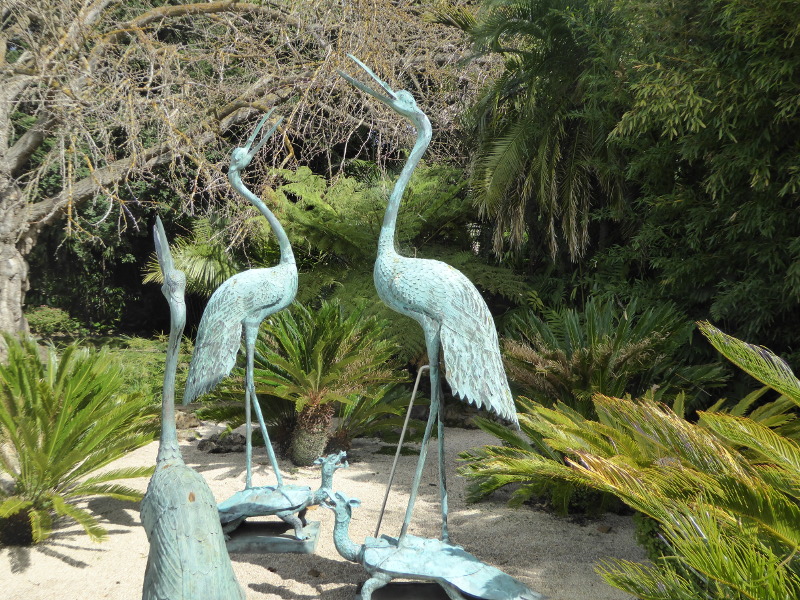
These rather beautiful sculptures of a group of cranes came from Japan in the 1880s, but only found their way to the Gardens in the 1970s.

The old customs house and telegraph office actually started out in Sydney as early as 1838, before making its way to Victoria and being used for sending telegraph messages in Geelong.
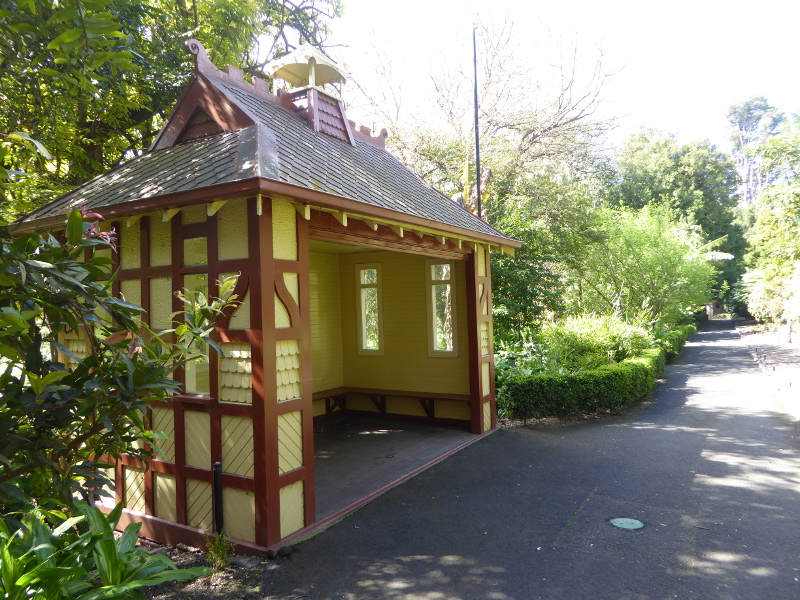
And then the ‘cabman’s shelter’, dating from 1905, moved to next-door Eastern Park in 1912, when there was clearly a whole redesign of Geelong’s city centre, and finally brought to the botanic gardens only in 1988.

It was early spring for my visit, but the veggie beds were going strong, with these broad beans looking ready for pollination any time now. I wonder who gets to eat the beans?

I rather liked this sunken greenhouse, which dates back to Bunce’s days in the 1860s. He built it for acclimatisation purposes, though most plants didn’t need to be acclimatised. These days it houses cacti.
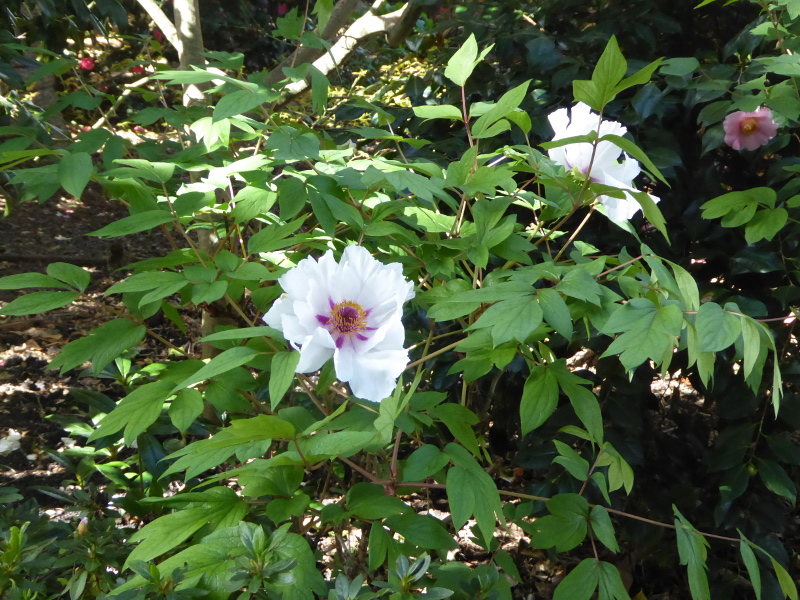
I looked hard for rhododendrons, which sounded as if they were all over the gardens in their early years, but their place seems to have been taken by camellias these days. I did finally find two stunningly beautiful rhododendrons, though, still in full flower, though leaving a carpet of purple confetti on the ground underneath.
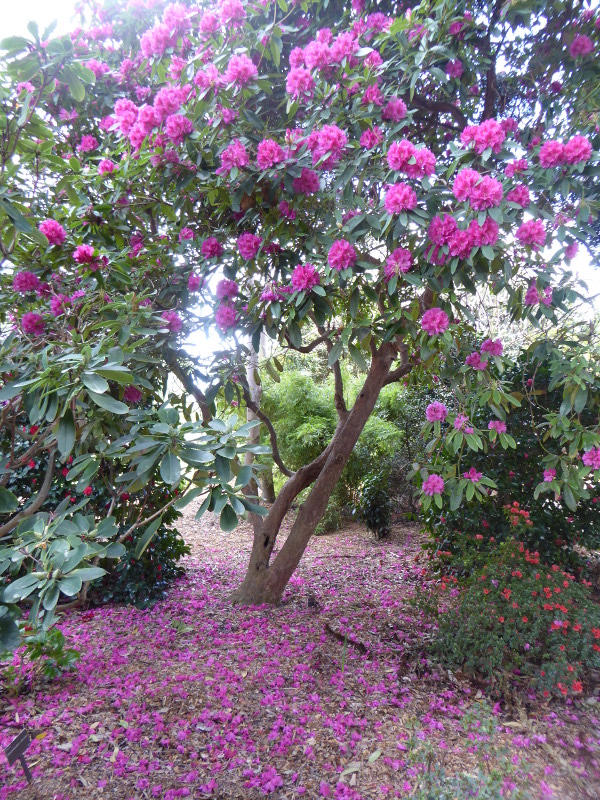
The focus is less on major trees than in many gardens, as I said. This 1873 redwood looked like a bit of a juvenile so probably has a good few hundred years left in it.
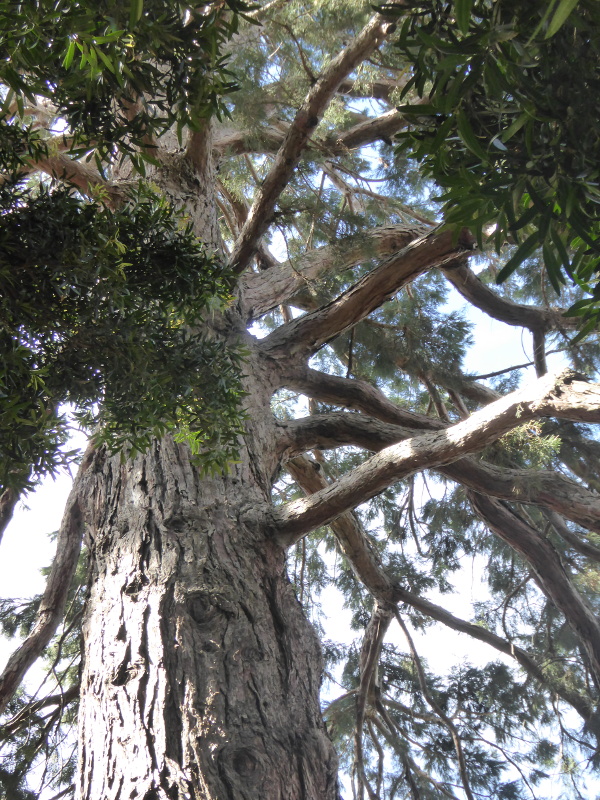
And I always like the character of these – are they monkey puzzle?
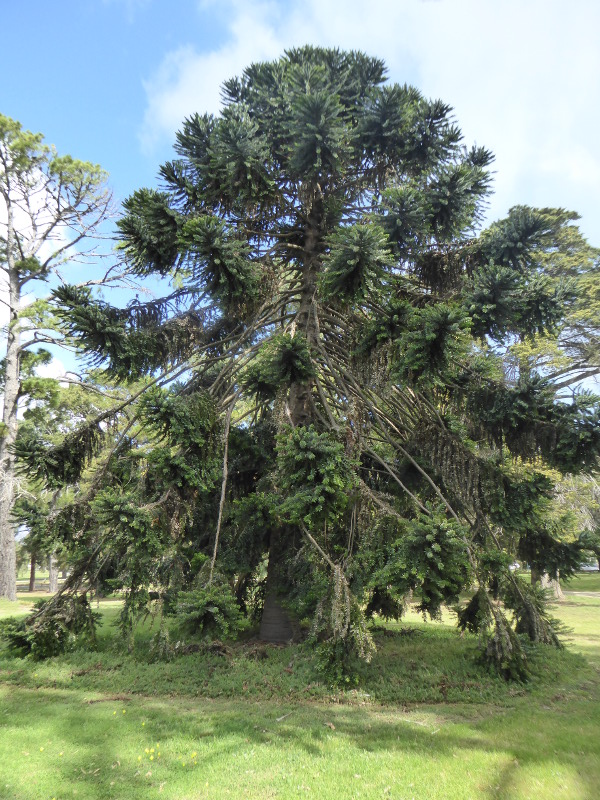
I also liked the local connection in the covered section on the far side of the gardens, which was apparently a geranium collection bequeathed to the gardens in the 1970s by a Miss Florence Clarke. I’d love to know more about that lady.
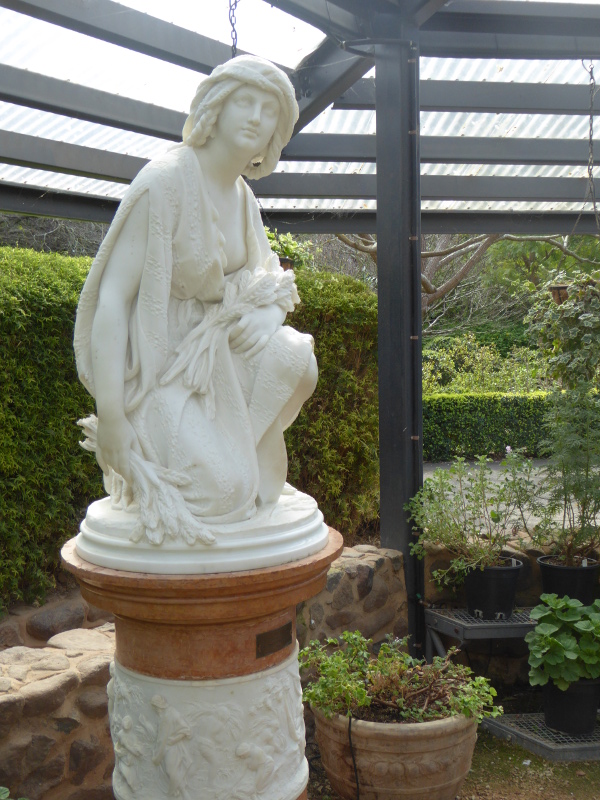
And the statue of Ruth, which we learn was carved in 1925, but why it ended up here isn’t too clear.

The gardens were being well-used in spite of Covid19 and the intermittent showers over the area. There were small groups having picnics, a cluster of musicians chatting in one shelter, families out with kids, and friends just out for a stroll. There were lots of photographers out with much better cameras than I have – well, the Geelong Botanic Gardens really are very photogenic!
Practicalities
There are toilets in Geelong Botanic Gardens connected to the Tea House, but otherwise you might need to head up into Eastern Park.
Lots of places to sit with some lovely vintage benches.

The gardens are open every day from 8am to 5pm.
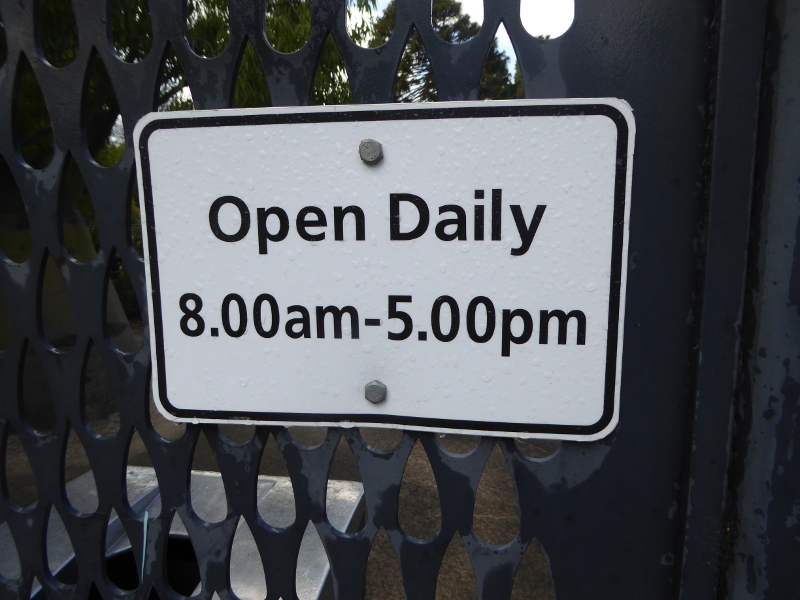 .
.
History and stories
Geelong Botanical Gardens are registered as opening in 1850 or 1851, but the first curator was only appointed in 1858. Mr Daniel Bunce had previously been an explorer, who had gone on journeys into the interior with the perhaps better-known Ludwig Leichhardt. The original garden was massive, some 200 acres, so four times the size of Melbourne’s Botanic Gardens. There were two residences, an octagonal conservatory, and plans early on for a lake.
A brown snake was found in the Gardens in March 1859. And a 10 year old boy was bitten by a snake in the gardens a few years after that.
“Despicable depradation” took place early on in the life of the gardens, with people pulling up and stealing seedlings from the nursery; other vandals scratched graffiti onto the white paintwork of the wooden benches round the Gardens. The same Melbourne correspondent in 1860 spoke admiringly, however, of the magnificent carriage driveways before you as you enter the main gate.
In 1861 an irregular shaped pond or lake was installed. – A Mr Douglass donated six goldfish from Mauritius to go into this lake in 1862 – two years later these had thrived and were swimming around in shoals of 20 or 30.
The curator Mr Bunce was clearly getting fed up with the behaviour of some visitors to the Gardens when he wrote to the local paper in 1864 to complain: Early versions of hoons were speeding (in horse-drawn carriages of course) from the entrance gates to the cricket oval, one of them toppling over, leaving debris on the paths; there were plants and fish stolen; and he particularly disliked the ‘iniquitous practice’ of people bringing their dogs into the gardens! He also objected to people picking bunches of flowers, or even ‘detaining’ his gardeners in conversation. So, there was no talking to the workmen under his regime, clearly…
Bunce became a prolific writer of letters to the local papers, sometimes appearing more than once a week in their columns, and getting into heated exchanges with other gents over the distribution and acquisition of plants for the town. He also wrote once to apologise for the ‘catastrophic’ shot that was fired by a man he had engaged to try to rid the Gardens of rabbits; no report appeared on what exactly the ‘catastrophe’ was, however…
Rhododendrons were brought from Liverpool’s botanic gardens in England in 1865.
The then Duke of Edinburgh visited the Gardens in December 1867, and planted a tree to mark his visit. The main entrance gate was renamed The Prince’s Gate after he left; I wonder if that’s still in place in 2021?
Tragedy befell Mr Bunce the curator in 1869, when three of his children all died from diphtheria. He himself died a couple of years later, succumbing to a disease he had probably picked up on his explorations into the interior earlier in his life.
Not long after the new curator was appointed, a boy walking through the Gardens in December 1872 spotted the body of a local man floating in the lake. The former bank manager was said to have been showing signs of ‘aberration of intellect’ in the period leading up to his death.
Mr Raddenbury, the second curator, himself had a costly accident in 1882, when a horse and carriage he owned broke free and ran amok through the gardens, knocking down a man walking the paths. But such was the curator’s popularity locally that a whip-round raised enough money to pay for the damages awarded against Mr Raddenbury. L50 would have been a hefty burden in those days.
In December 1884, a man smoking a pipe in the Gardens threw a match onto the ground after lighting up, resulting in a grass fire, which destroyed half an acre of lawns.
By 1888, Geelong was looking jealously at Ballarat, which by then had its display of marble statues, donated by those who had made a fortune in the goldfields.
An 1890 opinion piece in the Leader newspaper bemoaned the lack of shade over much of the parkland making up Geelong Botanic Gardens. He also objected to the ‘ugly’ grandstand erected on the eastern side of the gardens looking out over playing fields but leaving a wall which he described as ‘disgusting to behold’ facing the gardens themselves.
There were a couple of unusual court cases involving the botanic gardens at the turn of the century: in one, a woman was fined for uprooting some rare ferns and trying to conceal them in her bodice; and a male cyclist, training in the gardens for some future race, was fined for disturbing the peace – I guess bicycles, being new at the time, were regarded as noisy…
By 1912 there was a rotunda and tea pavilion, though it’s not clear when exactly they were introduced.
There were all the usual picnics organised by local groups over the years, Geelong Gardens became the venue for an annual gathering of 400 scouts for a few years, and the very last story on the Trove database actually dates from World War 2, when many of the flower beds were replaced with onion cultivation to help provide food for the British going through shortages in war.
What are your experiences at Geelong Botanic Gardens?
Does anybody know more about Florence Clarke, who donated the geraniums to the botanic gardens in the 1970s?
Does anyone know why the statue of Ruth came to Geelong botanic gardens in 1925?
Has anybody got their own memory to share from a visit to Geelong Botanic Gardens, perhaps dating from some decades ago, or just tell us what you like best about the gardens today?
Has anybody been inside the old telegraph office building in the Gardens? If so, what is there to see inside?
Other links and writings on the Geelong Botanic Gardens
A blogger after my own heart runs the Stories from Geelong Botanic Gardens blog, with fantastic details and some great stories.
Vireya’s Weednstitch blog came to Geelong Botanic Gardens in February 2019
The Think Geelong site reported from the Gardens in 2018.
The Go Beyond Melbourne travel website has a nice entry on Geelong Botanic Gardens.
The ABC’s gardening factsheets reported on Geelong Botanic Gardens in May 2019.
The Mamma Knows West blog has also posted on Geelong’s botanic gardens.
For a 16 minute video tour of the botanic gardens, try the Melbourne Site Hunters YouTube channel.
In a less positive vein, the Geelong Advertiser reported in 2015 on terrible vandalism in the gardens.


My grandfather was a curator at the Geelong Botanical Gardens. Alexander Brown. He came from Ballarat to take over. My father lived in the residence in the grounds with his family. He told many stories of his father and the work he did. I remember him saying how his father laid out the many trees and plants in the Eastern Gardens and beach area.
When I was a little girl, my father, Walter Dudley Brown always kept in contact with the curators that followed. We would go in places at the Geelong Botanical Gardens, where the public was not allowed, to see seedlings and new plants. My father started the Geelong Orchid and Indoor Plant Club. He had a love of native plants and would deliver lectures on orchids and Australian native plants.
Thanks for sharing, Jillian. How fantastic to come from a family on the inside!
The statue of Ruth was put on display in ” new glass house” on opening. and before on displayed at the old art gallery,at the Town Hall, Geelong.
The “Japanese Cranes” were displayed in the fountain pool’ up hill from the wadding pool Eastern beach. Until they were broken by vandals, rewelded together by the foreman of the welding Geelong Harbor Trust. About 1968! reset up at the Botanical Gardens in the pond, where the
‘Old Lath House” ( Fernery) was, I remember they were donated to the gardens, from a house Eastern Beach, could have been Corio Villa.
Yours Truthfully,
Chris Vafiopulous (youngest of George E. L.